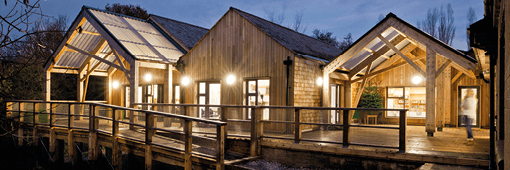Assessment of the durability and engineering properties of lesser-known hardwood timber species for use in marine and freshwater construction
In This Series
- Avoiding landfill through effective wood waste disposal and a shift in product focus

- Bracing for non-domestic timber trussed rafter roofs

- Cross-laminated timber: an introduction

- Environmentally responsible construction: Community wood recycling

- GD 5 How to calculate deformations in timber structures using Eurocodes


This collaborative research project between TRADA, the Environment Agency and HR Wallingford investigates the strength properties of five LUS - cupuiba, angelim, okan, tali and eveuss as an alternative to the frequently used Greenheart and Ekki.
In addition, this research report identifies marine borer and abrasion resistance of a range of candidate species.
Contents:
- Introduction
- Background
- Stage 1: Selection of the 'long list' of candidate timbers
- Sample selection and validation of timbers on the long list
- Stage 2: Laboratory screening trial to determine resistance to attack by gribble
- Stage 2: Laboratory screening trial to determine resistance to abrasion
- Stage 2: Marine exposure trial to determine resistance to shipworm
- Stage 3: Determination of the strength properties of five species of timber
- Discussion
- Conclusions and recommendations
Suggested Reading
New research identifies additional species for use in marine and freshwater construction
This report summarises the main findings of a collaborative research project funded by the Environment Agency and TRADA, which aimed to identify additional species for use in marine and freshwater construction.
The research examined the performance of 18 lesser-used species (LUS) tropical hardwoods, benchmarked against greenheart and ekki. Five...
01/01/2010 | Other Technical Guidance
Specifying timber species in marine and freshwater construction
Historically, the UK construction industry has favoured a narrow range of ‘tried and tested’ hardwood timbers for use in marine and freshwater applications.
Over-reliance on a small number of species is not compatible within sustainable forest management, as certain species are being over-exploited. This is likely to reduce the security...
04/05/2015 | Wood Information Sheet
Moisture in timber
One of the most important factors affecting the performance and properties of wood is its moisture content. The amount of water present in wood can affect its weight, strength, workability, susceptibility to biological attack and dimensional stability in a particular end use.
We estimate that over 80% of...
14/02/2017 | Wood Information Sheet

















